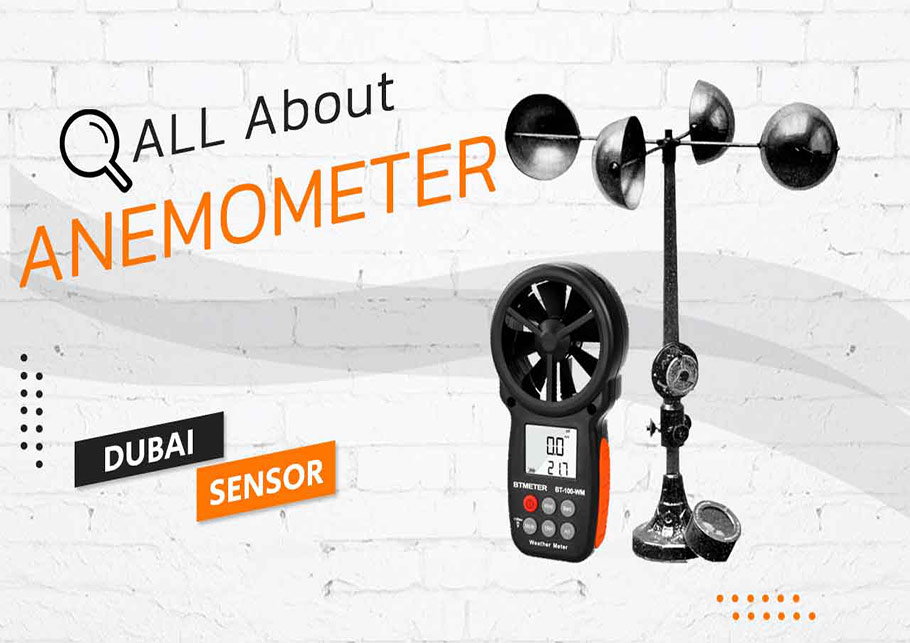How an Anemometer Can Improve Your Weather Surveillance System
Wiki Article
Checking Out the Features and Advantages of Anemometers for Climate Fanatics and Specialists
From mug anemometers to sonic anemometers, each type brings its unique collection of applications and advantages, losing light on numerous aspects of climatic conditions. As we dive into the features and benefits of anemometers, a deeper understanding arises not just of dominating climate phenomena but likewise of the broader effects for industries like wind energy production and ecological research.Importance of Anemometers in Weather Condition Monitoring
Anemometers play an important duty in weather condition monitoring by providing exact dimensions of wind speed, helping in forecasting and understanding weather condition patterns. These tools, varying from traditional cup anemometers to modern ultrasonic anemometers, are necessary for meteorologists, scientists, and climate fanatics alike.
Kinds Of Anemometers and Their Applications
The most typical types of anemometers consist of mug anemometers, vane anemometers, hot-wire anemometers, and ultrasonic anemometers. Cup anemometers are composed of 3 or four mugs mounted on straight arms that revolve with the wind, determining its rate. Vane anemometers, on the other hand, make use of a freely turning vane to straighten with the wind instructions, supplying both wind rate and instructions measurements.Each kind of anemometer has its one-of-a-kind benefits and applications. Mug anemometers are durable and suitable for general weather surveillance, while vane anemometers are preferred for directional measurements. Hot-wire anemometers are delicate to reduced air speeds, making them optimal for interior environments. Ultrasonic anemometers are non-intrusive and provide high precision, usually utilized in research study and specialized weather tracking applications. Understanding the attributes and applications of each kind of anemometer is vital for selecting the most suitable tool for details weather condition checking demands.
Advantages of Using Anemometers in Forecasting
In meteorology, the use of anemometers uses vital benefits for enhancing the accuracy of weather condition forecasting. Anemometers gauge wind speed and direction, offering essential information for forecasting weather condition patterns. By integrating wind data into projecting versions, meteorologists can much better comprehend the motion of weather condition systems, anticipate changes in atmospheric problems, and problem much more specific forecasts.
In addition, anemometers play an important function in examining potential climate risks. Monitoring wind speeds aids forecasters predict serious climate occasions such as hurricanes, tornadoes, and winter months storms with greater accuracy. This early warning system allows authorities to issue timely signals and execute necessary precaution, minimizing the threats to life and property.
Additionally, anemometers help in enhancing renewable resource manufacturing. By analyzing wind patterns, meteorologists can determine suitable locations for wind ranches and anticipate energy result, adding to the effective generation of wind power.

Anemometers in Wind Energy Manufacturing
Offered the important function anemometers play in supplying accurate wind data for weather projecting and hazard analysis, their value encompasses the realm of wind energy production. Anemometers are vital tools in the field of wind power, where the dimension of wind rate and direction is crucial for determining the expediency and effectiveness of wind turbine installations. By accurately gauging wind rates at differing heights, anemometers aid enhance the positioning and layout of wind turbines to optimize energy result.In wind farms, anemometers are purposefully positioned to accumulate real-time wind data that is used to examine the potential power manufacturing of a website. This data More about the author is crucial in figuring out the financial feasibility of wind power projects and in forecasting energy generation to guarantee grid security. In addition, anemometers help in monitoring wind problems to optimize generator performance, avoid damage from high winds, and make sure the safety and security of workers operating in the vicinity of wind generators.
Enhancing Weather Condition Recognizing With Anemometers

Anemometers play a key role in enhancing our understanding of try here microclimates. These local weather can differ dramatically from more comprehensive regional projections, making it important to have accurate information for certain locations. anemometer. By strategically placing anemometers in various locations, researchers can collect comprehensive information on how wind acts in various terrains, urban atmospheres, or bodies of water
Moreover, anemometers add to enhancing weather condition forecasting designs by offering real-time data on wind behavior. This info is especially valuable for anticipating severe climate occasions, optimizing farming techniques, and sustaining markets like aviation and maritime navigation. Generally, anemometers are important instruments that enable us to delve deeper right into the intricacies of weather systems, eventually leading to more accurate predictions and better-informed decisions.
Final Thought
In final thought, anemometers play a vital duty in weather tracking and projecting by gauging wind rate and instructions. Anemometers also have applications in wind energy manufacturing, more highlighting their value in both meteorology and sustainable power fields.From mug anemometers to sonic anemometers, each kind brings its distinct set of applications and benefits, dropping light on numerous facets of atmospheric conditions. These instruments, ranging from standard mug anemometers to modern-day ultrasonic anemometers, are important for meteorologists, researchers, and weather condition fanatics alike. The most usual kinds of anemometers consist of mug anemometers, vane anemometers, hot-wire anemometers, and ultrasonic anemometers. Cup anemometers are robust and appropriate for general weather condition monitoring, while vane anemometers are favored for directional measurements. Anemometers are essential instruments in the see field of wind energy, where the measurement of wind speed and direction is vital for identifying the expediency and effectiveness of wind generator installations.
Report this wiki page